


xxxxxThe first engineers to produce the world’s first petrol-driven motor vehicle were two Germans working independently: Karl Benz and Gottlieb Daimler. Benz produced his Motorwagen in 1885, a purpose-built mechanized tricycle with a top speed of 8 mph. The single-cylinder internal combustion engine was mounted between the back wheels, and transmission was provided by two roller chains to the rear axle. It was well constructed and skilfully designed, and an improved version was on sale by 1888, the first commercially available automobile in history. He produced his first four-wheeler, the Victoria, in 1893, followed by the Velo a year later, and the Benz Truck, the first bus, in 1895. These sold well, and by the end of the century Benz & Company had become the world’s largest manufacturer of automobiles. Benz retired in 1903, and in 1926, due to the economic slump of that period, his company was merged with that of Daimler, and became Mercedes-Benz, a leading car manufacturer.
KARL FRIEDRICH BENZ 1844-1929
(Va, Vb, Vc, E7, G5)
Acknowledgements
Benz: date and artist unknown. Bertha: by the Mannheim court photographer Emil Buehler, c1870 – Automuseum Dr. Carl Benz, Ladenburg, Germany. Daimler: date and artist unknown. Mercedes: date and artist unknown. Parsons: detail, by the Irish portrait painter William Orpen (1878-1931), 1905/1910 – Laing Art Gallery, Newcastle-upon-Tyne, England. Lenoir: date and artist unknown. Levassor: date and artist unknown. Selden: date and artist unknown.
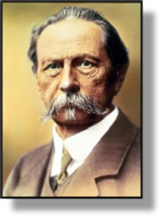 xxxxxTowards the end of the 19th century there was no scarcity of engineers and would-be-inventors working to produce the world’s first petrol-driven motor vehicle. First in the field proved to be two Germans, Karl Benz (illustrated) and Gottlieb Daimler. Born only sixty miles apart in southern Germany, they never met and, early on in their careers, never knew of each other’s existence, but in 1926 their pioneering automobile companies eventually combined to establish Mercedes-Benz, one of the world’s leading car manufacturers.
xxxxxTowards the end of the 19th century there was no scarcity of engineers and would-be-inventors working to produce the world’s first petrol-driven motor vehicle. First in the field proved to be two Germans, Karl Benz (illustrated) and Gottlieb Daimler. Born only sixty miles apart in southern Germany, they never met and, early on in their careers, never knew of each other’s existence, but in 1926 their pioneering automobile companies eventually combined to establish Mercedes-Benz, one of the world’s leading car manufacturers.
xxxxxBenz was born in Karlsruhe, close to the French-German border. When he was two years old his father, a train driver, was killed in a railway accident, but despite financial hardship his mother was determined to give him a good education. He attended the local grammar school and, showing an ability in science, gained places at the city’s Lyceum and Polytechnic University. Then over the next seven years he worked for various mechanical and engineering companies in his home town and further afield in Mannheim and Vienna, and by the age of 27 felt confident enough to set up his own business. His first two enterprises were failures, mainly caused by the lack of ready cash, but in 1883, in partnership with two others, he set up Benz & Company in Mannheim, a business which combined a bicycle repair shop with the production of industrial machinery, including stationary internal-combustion engines. This venture was highly successful and gave him both the money and the time to indulge in his long-held passion, the making of a “horseless carriage”, powered by that new source of power, petroleum. He was convinced that the internal-combustion engine would revolutionize the world's means of transport.
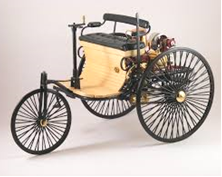 xxxxxHis first attempt was the Motorwagen, a purpose-built mechanized three-wheeler (not an adaptation of a stage coach or horse carriage), produced in 1885 with a top speed of 8 miles per hour. It proved to be the prototype of the modern automobile - the world's first practical vehicle powered by an internal-combustion engine. Complete with electric ignition and a simple cooling system, the single-cylinder internal combustion engine - made to his own design - was mounted between the rear wheels, and transmission was provided by two roller chains to the rear axle. It was patented in January 1886, driven through the streets of Munich later that year, and an advanced model (No.3) went on general sale in 1888, the first commercially available automobile in history, and four years before any rival manufacturer. It had its limitations, of course. Being a three-wheeler the central, front wheel often had a bumpy ride; steep hills could not be climbed unaided, and fuel could only be obtained in small quantities from local pharmacies. Nevertheless it was well constructed and skilfully designed, and this encouraged sales. By 1888 Benz was employing a work force of 50 to build his tricycle car, and it was put on show at the world fair in Paris the following year.
xxxxxHis first attempt was the Motorwagen, a purpose-built mechanized three-wheeler (not an adaptation of a stage coach or horse carriage), produced in 1885 with a top speed of 8 miles per hour. It proved to be the prototype of the modern automobile - the world's first practical vehicle powered by an internal-combustion engine. Complete with electric ignition and a simple cooling system, the single-cylinder internal combustion engine - made to his own design - was mounted between the rear wheels, and transmission was provided by two roller chains to the rear axle. It was patented in January 1886, driven through the streets of Munich later that year, and an advanced model (No.3) went on general sale in 1888, the first commercially available automobile in history, and four years before any rival manufacturer. It had its limitations, of course. Being a three-wheeler the central, front wheel often had a bumpy ride; steep hills could not be climbed unaided, and fuel could only be obtained in small quantities from local pharmacies. Nevertheless it was well constructed and skilfully designed, and this encouraged sales. By 1888 Benz was employing a work force of 50 to build his tricycle car, and it was put on show at the world fair in Paris the following year.
xxxxxIt was not until 1893 that Benz produced his first four-wheeler - seven years after Daimler produced his version. Named the Victoria, it was designed for two passengers, was powered by a 3 horsepower engine, and had a top speed of 11 miles per hour. Well constructed, relatively inexpensive, and simple to drive, it sold well, and was superseded by the Velo the following year. This improved version with a speed of 15 mph might well be seen as the first mass produced automobile. Over 1,200 had been sold by 1901. Meanwhile, in 1895 the Benz Truck was in service, the first bus in history, and the first series of racing cars had been produced in 1899. By that year Benz & Company employed a work force of 430, and had become the world’s largest manufacturer of automobiles.
 xxxxxHowever, by 1903, the year of Benz’ retirement, the company’s leadership was already being challenged by the Daimler Motoren Gesellschaft (DMG), both in design and the efficiency of its engines. Both companies continued to make a profit, but during the economic slump of the early 1920s sales fell dramatically, and in 1926 both companies merged to form the Daimler Benz AG with the commercial brand name of Mercedes-Benz. Karl Benz saw the merger through and served on in a supervisory capacity until his death three years later. He died of a chest infection at his home in Ladenburg, and his house is now a museum dedicated to his life’s work.
xxxxxHowever, by 1903, the year of Benz’ retirement, the company’s leadership was already being challenged by the Daimler Motoren Gesellschaft (DMG), both in design and the efficiency of its engines. Both companies continued to make a profit, but during the economic slump of the early 1920s sales fell dramatically, and in 1926 both companies merged to form the Daimler Benz AG with the commercial brand name of Mercedes-Benz. Karl Benz saw the merger through and served on in a supervisory capacity until his death three years later. He died of a chest infection at his home in Ladenburg, and his house is now a museum dedicated to his life’s work.
xxxxxKarl Benz was without doubt a leading if not the leading pioneer in the development of the automobile industry. He was the first - officially at least - to patent a workable vehicle powered by a petrol-driven internal combustion engine, and by his invention he developed an industry which, for a number of years, led the world in automobile construction. However, as we shall see, the German engineer Gottlieb Daimler can rightly claim much credit for the successful building of the first automobile. His high speed internal combustion engine of 1885, designed similar to Benz’s own pioneering work, and much improved in 1889, made a vital contribution to the development of the automobile industry in the closing years of the 19th century.
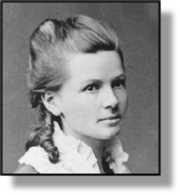
xxxxxIncidentally, in his career Benz owed much to his wife Bertha. In 1871, the year before they married, she helped him financially when his business ran into difficulties, and in 1888, without his knowledge, she made a 60 mile trip to visit her mother at Pforzheim just to prove that that the Motorwagon was capable of making long distances. As a publicity stunt it proved highly successful, and in 2008 the Bertha Benz Memorial Route was opened up to commemorate the event. Later, in his autobiography, Benz wrote: “In those days when our little boat of life threatened to capsize, only one person stood steadfastly by me, my wife. She bravely set new sails of hope”. Bertha died in 1944 at the age of 95. ……
xxxxx…… One of the first persons to have a car in England was a man named Henry Hewetson. He brought a Benz Velo in 1894. The story goes that he drove it to Charing Cross Station and was stopped by the police because - as required by the Locomotive Act of 1865 - he did not have a man with a red flag walking in front of the vehicle to warn of the coming of a “self-propelled machine”. The Act was abolished two years later, and the speed limit raised from 4 to 12 mph.
Vc-1881-1901-Vc-1881-1901-Vc-1881-1901-Vc-1881-1901-Vc-1881-1901-Vc-1881-1901-Vc
xxxxxIt was in 1885 that the German engineer Gottlieb Daimler (1834-1900), working with his partner Wilhelm Maybach, produced his light-weight, highly efficient petrol engine. Based on an earlier model by the German inventor Nickolaus Otto, it was the forerunner of the modern car engine. He fitted it to a wooden bicycle - making the first motor cycle - and the following year he adapted an existing stage coach and produced the first four-wheeled “horseless carriage”, capable of reaching a speed of 10 mph. A purpose-built vehicle, made in 1889, sold well, and to meet the demand he set up his own company. The efficiency and reliability of this auto was proven in a series of international car races, and in 1901 he produced his Mercedes, with a four-cylinder engine and a top speed of 55 mph. By then his cars were being sold by licence and via subsidiary companies across the world. Daimler died in 1900 and, as we have seen, in 1926 his company was merged with that of Benz, and took the name Mercedes-Benz.
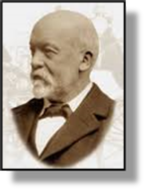 xxxxxGottlieb Daimler (1834-1900) was born near Stuttgart, and began his training as a mechanical engineer at the city’s Polytechnic. Like Karl Benz, he then worked for a wide variety of engineering companies. In his case, this took him to Britain, where he was employed at Manchester by the English engineer Joseph Whitworth, and to France, where he might well have seen the petrol engine then being developed by the Belgian-born French engineer Étienne Lenoir.
xxxxxGottlieb Daimler (1834-1900) was born near Stuttgart, and began his training as a mechanical engineer at the city’s Polytechnic. Like Karl Benz, he then worked for a wide variety of engineering companies. In his case, this took him to Britain, where he was employed at Manchester by the English engineer Joseph Whitworth, and to France, where he might well have seen the petrol engine then being developed by the Belgian-born French engineer Étienne Lenoir.
xxxxxOnxreturning to Germany, he was appointed technical director to Deutz Gasmotorenfabrik in 1872, a petrol-engine company in Cologne, part owned by the German inventor Nikolaus Otto. There, alongside a young engineer named Wilhelm Maybach (1846-1929), he worked on producing an internal combustion engine specifically designed to power a road vehicle. Over the next decade they met with some success, but in 1882, following a dispute with Otto, he and Maybach left and set up their own company. There, in 1885, improving substantially upon the “Otto Cycle” of 1876, they came up with a light-weight, highly efficient petrol engine which was, in all major respects, the forerunner of the modern car engine. In that year Daimler fitted it to a wooden bicycle - the first motor-cycle to be made - and then in 1886 he adapted an existing stage-coach and produced the first four-wheeled “horseless carriage”, capable of reaching a speed of 10 miles per hour. His first purpose-built automobile was produced in 1889, and the following year, to meet the growing demand for his autos, Daimler founded the Daimler Motoren Gesellschaft at Stuttgart with Maybach as its chief designer.
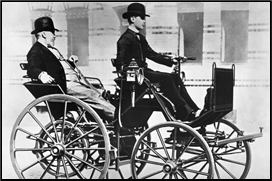 xxxxxAs testimony to the efficiency and reliability of the Daimler engine - immensely improved in 1889 - a Daimler-powered car won the first international car race, held from Paris to Rouen in 1894, and the 15 cars that completed the course all had Daimler engines. And this superiority in performance was maintained in races held over the next twelve years. Meanwhile, in 1901 Maybach produced the first “Mercedes” car, equipped with a four-cylinder engine and with a top speed of 55 mph, and this greatly boosted commercial sales. By then Daimler cars were being made under licence, and there were subsidiary companies in a number of countries. Inxthe United States, for example, William Steinway (1835-1896), director of the famous manufacturer of quality pianos, set up a Daimler Motor Company in New York as early as 1888, and this eventually produced a series of Daimler engines, cars and light trucks.
xxxxxAs testimony to the efficiency and reliability of the Daimler engine - immensely improved in 1889 - a Daimler-powered car won the first international car race, held from Paris to Rouen in 1894, and the 15 cars that completed the course all had Daimler engines. And this superiority in performance was maintained in races held over the next twelve years. Meanwhile, in 1901 Maybach produced the first “Mercedes” car, equipped with a four-cylinder engine and with a top speed of 55 mph, and this greatly boosted commercial sales. By then Daimler cars were being made under licence, and there were subsidiary companies in a number of countries. Inxthe United States, for example, William Steinway (1835-1896), director of the famous manufacturer of quality pianos, set up a Daimler Motor Company in New York as early as 1888, and this eventually produced a series of Daimler engines, cars and light trucks.
xxxxxDaimlerxdid not live to see the launch of the new Mercedes. He died of heart trouble at Stuttgart in March 1900. The car’s designer, Maybach, left the company in 1907 and set up his own factory to provide engines for rigid airships, then being constructed by the German inventor Ferdinand von Zeppelin (1838-1917). Asxwe have seen, the economic slump in the early 1920s brought about a fall in sales, and in 1926 Daimler Motoren Gesellschaft and Benz & Company merged to form Daimler-Benz AG, with the commercial brand name of Mercedes-Benz. In 1936 it became the first company to produce a car with a diesel engine, invented by the German engineer Rudolf Diesel (1858-1913) in 1892, and much improved over the years.
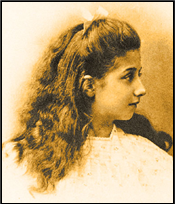 xxxxxIncidentally,xthe name “Mercedes”, now known the world over, was the brainchild of Emil Jellinek (1853-1918), a wealthy Austrian businessman and former diplomat who lived in Nice and was on the board of the Daimler company. When Maybach brought out his new model in 1901 - the first “modern car” - Jellinek was concerned that the German-sounding name of Daimler would not be popular with the French. He suggested that the name of his ten-year old daughter would be a more attractive brand name, and so it proved to be. A plain-speaking, crotchety character, he later became known as E.J. Mercedes, the first time, he quipped, that a father had taken his daughter’s name! He played quite a large part in designing the 1901 model. It was not to be a car for today or for tomorrow, he said, but a car for “the day after tomorrow”. ……
xxxxxIncidentally,xthe name “Mercedes”, now known the world over, was the brainchild of Emil Jellinek (1853-1918), a wealthy Austrian businessman and former diplomat who lived in Nice and was on the board of the Daimler company. When Maybach brought out his new model in 1901 - the first “modern car” - Jellinek was concerned that the German-sounding name of Daimler would not be popular with the French. He suggested that the name of his ten-year old daughter would be a more attractive brand name, and so it proved to be. A plain-speaking, crotchety character, he later became known as E.J. Mercedes, the first time, he quipped, that a father had taken his daughter’s name! He played quite a large part in designing the 1901 model. It was not to be a car for today or for tomorrow, he said, but a car for “the day after tomorrow”. ……
xxxxx…… Ironically, it appears that Daimler, one of the great pioneers of modern motoring, never learned to drive, and showed no desire to do so! However, in the late 1887 he used his new engine to drive a small boat, reaching a speed of 6 knots, and the following year he used the same engine to fly a balloon - seen as the first airship - on a round trip from Stuttgart to Aldingen. A crash in 1897 in which the balloon’s designer Friedrich Wolfert (1850-1897) was killed, put an end to this commercial enterprise, but he did a good trade in boat engines over a number of years. ……
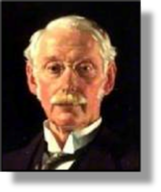 xxxxx…… Axman who made a significant contribution to marine engineering during this period was the English engineer Charles Algernon Parsons (1854-1931) (illustrated). In 1884 he invented a steam turbine which became a landmark in marine engineering, and he also developed screw propellers of a more efficient design. In 1897 His yacht Turbinia reached a speed of 34.5 knots - a record for that time - and his turbines went on to power a number of warships, and two British luxury liners, the Mauritania and her sister ship the Lusitania, sunk by a German U-boat during the First World War. Later, his turbine was widely used in electro generation, its efficiency making electricity more plentiful and cheaper.
xxxxx…… Axman who made a significant contribution to marine engineering during this period was the English engineer Charles Algernon Parsons (1854-1931) (illustrated). In 1884 he invented a steam turbine which became a landmark in marine engineering, and he also developed screw propellers of a more efficient design. In 1897 His yacht Turbinia reached a speed of 34.5 knots - a record for that time - and his turbines went on to power a number of warships, and two British luxury liners, the Mauritania and her sister ship the Lusitania, sunk by a German U-boat during the First World War. Later, his turbine was widely used in electro generation, its efficiency making electricity more plentiful and cheaper.
xxxxxParsons was born in London and, after studying at Trinity College, Dublin and Cambridge University, he worked for a number of engineering firms in England before setting up an engineering company and an electric light company at Newcastle-upon-Tyne in 1889. During a productive career he also developed optical equipment for the improvement of telescopes and searchlights. He was knighted in 1911.
Including:
Gottlieb Daimler and
the Automobile Industry

xxxxxThe automobile industry might be said to have started in 1678 when, as we have seen, the Dutch scientist Christiaan Huygens, designed the first internal-combustion engine, fuelled by gunpowder. It was never built, but his assistant, the French physicist Denis Papin, working along the same lines, was the first to conceive of a cylinder and piston steam engine, and his theories on the subject were used directly by his fellow countryman, the military engineer Nicholas-Joseph Cugnot. In 1769 (G3a) he designed the first true automobile - a steam-powered tricycle. Despite the fact that, due to its small boiler, it could only work for about 15 minutes, this crude and heavy steam carriage (12 tons in weight) can rightly be regarded as the world's first automobile.
xxxxxIt would seem that, by 1790, a similar machine was at work in Amiens, France, and that around this time steam vehicles were introduced in Salem, Massachusetts, and Hartford, Connecticut. In England the Scottish engineer William Murdock was running a model steam carriage on the roads of Cornwall as early as 1784, and steam buses were running in Paris around 1800. As we have seen, it was the Cornishman Richard Trevithick who developed Murdock's prototype and in 1804 (G3c) produced the first steam engine to run on rails.
xxxxxxxxxxxxxxxxxxxxxxxxxxxxxxxxxxxxxxxxxxxxxxxxxxxxxxxxxxxxxxxxxxxxxxxxxxxxxxxxxx
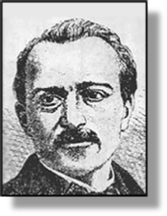 xxxxxThexdistinction of being the first to produce an internal combustion engine powered by fuel - where the future of the modern industry lay - is claimed by a number of engineers, including the Swiss François Isaac De Rivaz (1752-1828) in 1807, and the Englishman Samuel Brown (1776-1852) in 1824, but the Belgian-born French
xxxxxThexdistinction of being the first to produce an internal combustion engine powered by fuel - where the future of the modern industry lay - is claimed by a number of engineers, including the Swiss François Isaac De Rivaz (1752-1828) in 1807, and the Englishman Samuel Brown (1776-1852) in 1824, but the Belgian-born French 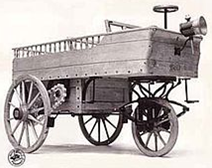 engineer Étienne Lenoir (1822-1900) (illustrated) is generally recognised as the rightful claimant. He built the first practical internal-combustion engine, powered at first by coal gas and then petroleum, and in 1863 he attached his engine to a three-wheeled wagon. For a short while this was put on the road, but the engine lacked the required power and was eventually used for driving smaller machines, like water pumps and lathes.
engineer Étienne Lenoir (1822-1900) (illustrated) is generally recognised as the rightful claimant. He built the first practical internal-combustion engine, powered at first by coal gas and then petroleum, and in 1863 he attached his engine to a three-wheeled wagon. For a short while this was put on the road, but the engine lacked the required power and was eventually used for driving smaller machines, like water pumps and lathes.
xxxxxOtherxinventors followed, such as the Austrian Siegfried Marcus (1831-1898) and the American George Brayton (1830-1892), but it was two German engineers, Eugen Langen (1833-1895) and Nikolaus Otto (1832-1891) who, improving upon Lenoir’s engine, came up with a more efficient model, the four-stroke “Otto Cycle” of 1876. As we have seen, it was that engine - further improved by the German Gottlieb Daimler and his partner Wilhelm Maybach - that produced a light-weight, highly efficient petrol engine, the forerunner of the modern car engine, in 1885. In the same year, the German Karl Benz produced his Motorwagen, a purpose-built mechanized three wheeler, the prototype of the modern automobile. From their two companies was to emerge Mercedes-Benz, one of the leading car makers of the 20th century.
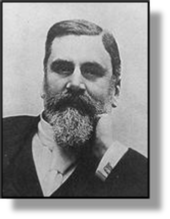 xxxxxAmong the other manufacturers at the end of the 19th century were three major companies in France: De Dion-Bouton, which began manufacturing railway cars as well as automobiles in 1883; Peugeot, which started out making pepper mills and coffee grinders, and began producing cars in 1891; and Renault, established by three brothers of that name in 1899, and gaining an enviable reputation in international motor racing. Andxalso worthy of mention is Panhard et Levassor, established in 1887. This company, through the initiative of the French engineer Émile Levassor (1843-1897) (here illustrated), was the first manufacturer to put the engine at the front of the vehicle and devise a layout for rear-wheel drive. In Italy, Stafanini-Martina, formed in 1896, is considered the founder of the country’s car industry. Fiat, destined to have a long
xxxxxAmong the other manufacturers at the end of the 19th century were three major companies in France: De Dion-Bouton, which began manufacturing railway cars as well as automobiles in 1883; Peugeot, which started out making pepper mills and coffee grinders, and began producing cars in 1891; and Renault, established by three brothers of that name in 1899, and gaining an enviable reputation in international motor racing. Andxalso worthy of mention is Panhard et Levassor, established in 1887. This company, through the initiative of the French engineer Émile Levassor (1843-1897) (here illustrated), was the first manufacturer to put the engine at the front of the vehicle and devise a layout for rear-wheel drive. In Italy, Stafanini-Martina, formed in 1896, is considered the founder of the country’s car industry. Fiat, destined to have a long 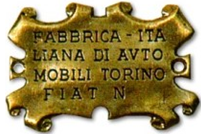 and successful future, began in 1899, and Isotta Fraschini, opened the following year, specialising in the production of luxury vehicles. The sporty models associated with Lancia, Alfa Romeo and Maserati were not in production until the early years of the 20th century. In the United Kingdom, Humber began making cars at Coventry in 1898, but the Austin Motor Company and Rolls Royce were not founded until 1905 and 1906 respectively.
and successful future, began in 1899, and Isotta Fraschini, opened the following year, specialising in the production of luxury vehicles. The sporty models associated with Lancia, Alfa Romeo and Maserati were not in production until the early years of the 20th century. In the United Kingdom, Humber began making cars at Coventry in 1898, but the Austin Motor Company and Rolls Royce were not founded until 1905 and 1906 respectively.
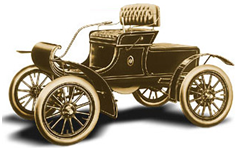
xxxxxMeanwhile,xin the United States - the emerging giant of industry - no less than 50 automobile-manufacturing companies were in operation by 1898. Among the leading manufacturers was Ransom Eli Olds (1864-1950), who began producing cars in Detroit in 1901, and whose name survives in the three-horsepower Oldsmobile (illustrated). This is seen by some as the first commercially successful all-American automobile, with sales rocketing to 5,000 in 1904. Butxequally successful were the Duryea brothers, Charles (1861-1938) and Frank (1869-1967). They brought out their horseless carriage in 1893, and their cars remained on the market until 1917. And several others were among the first in the field. WilliamxLambert (1860-1952) of Ohio produced a petrol-driven single-cylinder car in 1890, and The Winton Motor Carriage Company, established by Alexander Winton (1860-1932) at Cleveland, Ohio in 1897, began selling cars in 1898. One was bought by James Ward Packard (1863-1928) and he, convinced that he could make a better model, opened his own company a year later. HenryxFord (1863-1947), working in a shed in Detroit, produced his first experimental model - his Quadricycle - in 1896. Twelve years later, he was to revolutionize the car industry with his Model T, an inexpensive, easy to maintain vehicle, mass produced by way of an assembly-line.
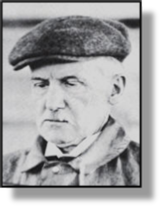 xxxxxIncidentally,xit was an American lawyer and inventor from Rochester, New York, named George B. Selden (1846-1922) who disputed the Daimler-Benz claim to being the first to invent the automobile. He had invented an internal combustion engine in 1878 for use in a horseless carriage and had applied for a patent in May 1879. However, because of a series of amendments, the patent was not issued until 1895. On the strength of this patent - although he had never made a working model to support it - he then collected royalties from a number of American companies. It was not until 1911, after Henry Ford had contested the patent over many years, that it was eventually declared invalid. It was a victory for Ford, who, from the start, had argued that “Selden and his patent can go to hell”! ……
xxxxxIncidentally,xit was an American lawyer and inventor from Rochester, New York, named George B. Selden (1846-1922) who disputed the Daimler-Benz claim to being the first to invent the automobile. He had invented an internal combustion engine in 1878 for use in a horseless carriage and had applied for a patent in May 1879. However, because of a series of amendments, the patent was not issued until 1895. On the strength of this patent - although he had never made a working model to support it - he then collected royalties from a number of American companies. It was not until 1911, after Henry Ford had contested the patent over many years, that it was eventually declared invalid. It was a victory for Ford, who, from the start, had argued that “Selden and his patent can go to hell”! ……
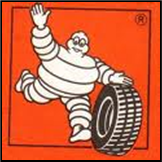 xxxxx…… Thexrubber tyre industry received a gigantic boost to its production with the coming of the automobile. The Scottish inventor Robert Thomson (1822-1873) had produced a pneumatic tyre as far back as 1846, and fitted it on a number of horse-drawn carriages, but it had not been developed further. Wheels continued to be fitted with strips of solid rubber. In 1888, however, a fellow countryman, John Boyd Dunlop (1840-1921), while trying to improve his son’s bicycle, re-invented this “cushion of air”, and in 1890 began producing pneumatic tyres in Ireland. Thexfollowing year two French brothers, André (1853-1931) and Édouard (1859-1940) Michelin, produced a removable pneumatic tyre and in 1895 began producing it for the automobile industry. And two other giants of the industry were established around this time. Inx1898 Frank Seilberling (1859-1955), the son of German migrants, established the Goodyear Tyre and Rubber Company at Akron, Ohio. Named after the American Charles Goodyear (1800-1860) - who had invented vulcanized rubber in 1839 - it provided tyres for bicycles and carriages, but by 1901 it was selling to the car makers. Andxthe Firestone Tyre and Rubber Company of 1900 also had its beginnings at Akron. Formed by an American businessman named Harvey Firestone (1868-1938), by the early years of the new century it was mass producing tyres for a number of car manufacturers, including Henry Ford. ……
xxxxx…… Thexrubber tyre industry received a gigantic boost to its production with the coming of the automobile. The Scottish inventor Robert Thomson (1822-1873) had produced a pneumatic tyre as far back as 1846, and fitted it on a number of horse-drawn carriages, but it had not been developed further. Wheels continued to be fitted with strips of solid rubber. In 1888, however, a fellow countryman, John Boyd Dunlop (1840-1921), while trying to improve his son’s bicycle, re-invented this “cushion of air”, and in 1890 began producing pneumatic tyres in Ireland. Thexfollowing year two French brothers, André (1853-1931) and Édouard (1859-1940) Michelin, produced a removable pneumatic tyre and in 1895 began producing it for the automobile industry. And two other giants of the industry were established around this time. Inx1898 Frank Seilberling (1859-1955), the son of German migrants, established the Goodyear Tyre and Rubber Company at Akron, Ohio. Named after the American Charles Goodyear (1800-1860) - who had invented vulcanized rubber in 1839 - it provided tyres for bicycles and carriages, but by 1901 it was selling to the car makers. Andxthe Firestone Tyre and Rubber Company of 1900 also had its beginnings at Akron. Formed by an American businessman named Harvey Firestone (1868-1938), by the early years of the new century it was mass producing tyres for a number of car manufacturers, including Henry Ford. ……
 xxxxx…… Britain’s first motor show was held at Tunbridge Wells in Kent in 1895. There were about six cars on show. The following year, however, a much larger show was held at the Imperial Institute in London. It was attended by the Prince of Wales and was a huge success. And it was in that year that the first London to Brighton run was held. Out of the 33 cars that took part only 13 finished the course! ……
xxxxx…… Britain’s first motor show was held at Tunbridge Wells in Kent in 1895. There were about six cars on show. The following year, however, a much larger show was held at the Imperial Institute in London. It was attended by the Prince of Wales and was a huge success. And it was in that year that the first London to Brighton run was held. Out of the 33 cars that took part only 13 finished the course! ……
xxxxx…… In 1896 Walter Arnold of East Peckham, near Tonbridge, Kent, became the first motorist to be convicted of speeding in Britain. In January of that year he was spotted by the local police constable doing 8 mph in a built-up area where the speed limited was restricted to 2 mph. He followed the vehicle on his bicycle and managed to catch up with it after a five mile chase. Later, Arnold appeared before magistrates at Tonbridge police court and was fined one shilling plus costs for the offence. ......
xxxxx...... The first fatal motor car accident in Britain occurred at Harrow on the Hill, just outside London, in February 1899. A daimler went out of control going down the hill, hit the kerb at the bottom, and pitched driver and passenger on to the road. Both died of their injuries.
xxxxxThe automobile industry had its beginnings in 1678, when the Dutch scientist Christiaan Huygens designed the first internal combustion engine, fuelled by gunpowder. His assistant, French physicist Denis Papin, continued his work, and his theories were used by the French engineer Nicholas-Joseph Cugnot. He designed a steam-powered tricycle - the first true automobile - in 1769 (G3a). In 1863 the Belgian-born French engineer Étienne Lenoir (1822-1900) attached a petrol-powered engine to a three-wheeled wagon, and this was improved upon by the German engineer Nikolaus Otto. As we have seen, his “Otto Cycle” of 1876 provided the basis for the first light-weight, highly efficient petrol engine, produced by Gottlieb Daimler and Wilhelm Maybach in 1885. In the same year, the German Karl Benz produced his Motorwagen, the prototype of the modern automobile. By the end of the century a large number of car manufacturers had been established. Principal among them were De Dion-Bouton, Peugeot and Renault in France; Stafanini-Martina, Fiat and Isotta Fraschini in Italy; and Humber in the United Kingdom. In the United States, where some 50 companies were in operation, the major industrialists were Ransom Eli Olds, the Duryea brothers, William Lambert, Alexander Winton, James Ward Packard, and Henry Ford, the man who was to revolutionize the industry with his Model T of 1908.






 xxxxxTowards the end of the 19th century there was no scarcity of engineers and would-
xxxxxTowards the end of the 19th century there was no scarcity of engineers and would- xxxxxHis first attempt was the Motorwagen, a purpose-
xxxxxHis first attempt was the Motorwagen, a purpose- xxxxxHowever, by 1903, the year of Benz’ retirement, the company’s leadership was already being challenged by the Daimler Motoren Gesellschaft (DMG), both in design and the efficiency of its engines. Both companies continued to make a profit, but during the economic slump of the early 1920s sales fell dramatically, and in 1926 both companies merged to form the Daimler Benz AG with the commercial brand name of Mercedes-
xxxxxHowever, by 1903, the year of Benz’ retirement, the company’s leadership was already being challenged by the Daimler Motoren Gesellschaft (DMG), both in design and the efficiency of its engines. Both companies continued to make a profit, but during the economic slump of the early 1920s sales fell dramatically, and in 1926 both companies merged to form the Daimler Benz AG with the commercial brand name of Mercedes-
 xxxxxGottlieb Daimler (1834-
xxxxxGottlieb Daimler (1834- xxxxxAs testimony to the efficiency and reliability of the Daimler engine -
xxxxxAs testimony to the efficiency and reliability of the Daimler engine - xxxxxIncidentally,xthe name “Mercedes”, now known the world over, was the brainchild of Emil Jellinek (1853-
xxxxxIncidentally,xthe name “Mercedes”, now known the world over, was the brainchild of Emil Jellinek (1853- xxxxx…… Axman who made a significant contribution to marine engineering during this period was the English engineer Charles Algernon Parsons (1854-
xxxxx…… Axman who made a significant contribution to marine engineering during this period was the English engineer Charles Algernon Parsons (1854-
 xxxxxThexdistinction of being the first to produce an internal combustion engine powered by fuel -
xxxxxThexdistinction of being the first to produce an internal combustion engine powered by fuel - engineer
engineer  xxxxxAmong the other manufacturers at the end of the 19th century were three major companies in France: De Dion-
xxxxxAmong the other manufacturers at the end of the 19th century were three major companies in France: De Dion- and successful future, began in 1899, and Isotta Fraschini, opened the following year, specialising in the production of luxury vehicles. The sporty models associated with Lancia, Alfa Romeo and Maserati were not in production until the early years of the 20th century. In the United Kingdom, Humber began making cars at Coventry in 1898, but the Austin Motor Company and Rolls Royce were not founded until 1905 and 1906 respectively.
and successful future, began in 1899, and Isotta Fraschini, opened the following year, specialising in the production of luxury vehicles. The sporty models associated with Lancia, Alfa Romeo and Maserati were not in production until the early years of the 20th century. In the United Kingdom, Humber began making cars at Coventry in 1898, but the Austin Motor Company and Rolls Royce were not founded until 1905 and 1906 respectively. xxxxxIncidentally,xit was an American lawyer and inventor from Rochester, New York, named George B. Selden (1846-
xxxxxIncidentally,xit was an American lawyer and inventor from Rochester, New York, named George B. Selden (1846- xxxxx…… Thexrubber tyre industry received a gigantic boost to its production with the coming of the automobile. The Scottish inventor Robert Thomson (1822-
xxxxx…… Thexrubber tyre industry received a gigantic boost to its production with the coming of the automobile. The Scottish inventor Robert Thomson (1822- xxxxx…… Britain’s first motor show was held at Tunbridge Wells in Kent in 1895. There were about six cars on show. The following year, however, a much larger show was held at the Imperial Institute in London. It was attended by the Prince of Wales and was a huge success. And it was in that year that the first London to Brighton run was held. Out of the 33 cars that took part only 13 finished the course! ……
xxxxx…… Britain’s first motor show was held at Tunbridge Wells in Kent in 1895. There were about six cars on show. The following year, however, a much larger show was held at the Imperial Institute in London. It was attended by the Prince of Wales and was a huge success. And it was in that year that the first London to Brighton run was held. Out of the 33 cars that took part only 13 finished the course! ……


